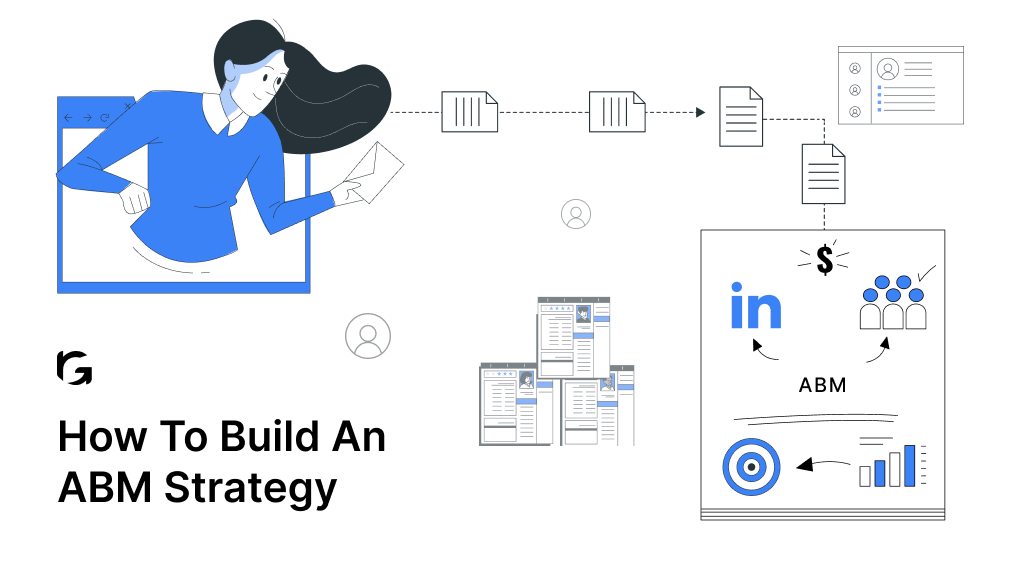Introduction
A few years ago, a SaaS founder came to us with a familiar problem—his product was great, but no one knew about it. Instead of following the standard playbook—ads, content, and cold outreach—we took a different approach. We built demand before launch. We sparked conversations in niche communities, engaged decision-makers on LinkedIn, and published insights that positioned the brand as an authority. By the time the product officially launched, the sales team wasn’t chasing leads—they were managing inbound interest.
A go-to-market strategy isn’t just about launching a product—it’s about making sure it reaches the right people, at the right time, with the right message. The difference between a product that gains traction and one that struggles often comes down to execution. In 2025, the most effective strategies will focus on precision, positioning, and leveraging the right channels for maximum impact.
Let’s look at five go-to-market strategies that are driving results for SaaS companies this year.
What exactly is go-to-market Strategy?
The go-to-market (GTM) strategy is a comprehensive plan that outlines how a company will introduce and deliver its new product to the market, ensuring a successful launch. It’s a strategic roadmap that encompasses various elements, aligning them to achieve maximum impact and market penetration.
The 3 main parts of GTM
A go-to-market (GTM) strategy typically comprises three main interconnected parts that work together to ensure a successful product launch and market penetration:
1. Market understanding and segmentation
Conduct thorough research on market trends, customer behaviors, and competitor offerings. This information informs decision-making and helps position your product effectively in the marketplace. Divide the overall market into distinct segments based on factors such as customer needs, preferences, and buying behaviors. Tailor your go-to-market approach to address the unique characteristics of each segment.
2. Value proposition and positioning
- Value Proposition: Clearly articulate the unique value that your product or service brings to customers. This involves identifying the key benefits and advantages that set your offering apart.
- Product Positioning: Determine how your product will be perceived in the market. Define its position relative to competitors, emphasizing its strengths and addressing potential weaknesses.
3. Distribution and marketing execution
- Distribution Channels: Identify the most effective channels for delivering your product to customers. This may include online platforms, retail outlets, partnerships, or a combination of distribution methods.
- Pricing Strategy: Develop a pricing strategy that aligns with market expectations and reflects the perceived value of your product. Pricing plays a critical role in shaping customer perceptions and purchase decisions.
- Promotional Tactics: Create a comprehensive plan for promoting your product. This includes marketing activities such as social media campaigns, content marketing, advertising, and public relations to generate awareness and interest.
- Sales Strategy: Define the sales process, ensuring that sales teams are well-equipped and trained. Develop strategies for lead conversion and customer acquisition to support the overall go-to-market plan.
Benefits of using a go-to-market plan
Implementing a well-crafted go-to-market (GTM) plan offers various benefits, helping businesses effectively launch and promote their products. Here are six key advantages:
1. Targeted market entry
A GTM plan ensures a strategic and targeted entry into the market. By identifying and understanding the specific needs of the target audience, businesses can tailor their approach to meet customer expectations, increasing the likelihood of a successful market entry.
2. Efficient resource utilization
A well-defined GTM plan enables businesses to allocate resources effectively. By focusing on selected market segments and channels, companies can optimize their budgets, time, and personnel, avoiding unnecessary expenditures on less impactful strategies.
3. Competitive advantage
Crafting a unique value proposition and positioning strategy within the GTM plan allows businesses to differentiate themselves from competitors. This competitive advantage helps capture the target audience’s attention and stand out in a crowded marketplace.
4. Clear communication and messaging
The GTM plan provides a framework for developing clear and consistent communication and messaging strategies. This ensures that both internal teams and external stakeholders understand the product’s value proposition, features, and benefits, promoting a cohesive and compelling narrative.
5. Maximized market impact
By strategically selecting distribution channels, pricing strategies, and promotional tactics, a GTM plan maximizes the impact of a product launch. It aims to create a buzz around the product, generate awareness, and attract the attention of potential customers, ultimately driving sales and market share.
6. Adaptability and continuous improvement
A well-structured GTM plan includes mechanisms for performance measurement and feedback. This allows businesses to adapt to market changes swiftly, leveraging real-time data and customer insights to refine and optimize their strategies continuously. The iterative nature of the GTM plan promotes agility and responsiveness to evolving market dynamics.
A carefully crafted go-to-market plan is instrumental in ensuring a successful and impactful product launch. It not only provides a roadmap for market entry but also offers a structured approach for resource allocation, differentiation from competitors, and continuous improvement based on market feedback and performance metrics.
7 KPIs of a Go-to-market strategy
Key Performance Indicators (KPIs) are crucial for measuring the success and effectiveness of a go-to-market (GTM) strategy. Here are seven essential KPIs to track:
1. Customer acquisition cost (CAC)
- CAC measures the average cost incurred to acquire a new customer. It includes expenses related to marketing, sales, and any other costs associated with bringing in new customers.
- Monitoring CAC helps ensure that the cost of acquiring customers aligns with the revenue they generate, contributing to the overall profitability of the GTM strategy.
2. Customer lifetime value (CLV or LTV)
- CLV represents the total revenue a business expects to earn from a customer throughout its entire relationship.
- Comparing CLV to CAC provides insights into the long-term value of acquired customers. A positive CLV to CAC ratio indicates a healthy return on customer acquisition investment.
3. Market share
- Market share reflects the portion of the total market that a company controls or the percentage of total sales within the market.
- Monitoring market share over time helps gauge the effectiveness of the GTM strategy in gaining traction and competing successfully in the market.
4. Customer satisfaction (CSAT) and net promoter score (NPS)
- CSAT measures overall customer satisfaction, while NPS gauges the likelihood of customers recommending the product or service to others.
- High CSAT and NPS scores indicate satisfied customers who are likely to contribute to positive word-of-mouth marketing and brand advocacy.
5. Conversion rates
- Conversion rates track the percentage of leads or prospects that successfully convert into paying customers.
- Analyzing conversion rates at various stages of the customer journey provides insights into the effectiveness of sales and marketing efforts.
6. Return on investment (ROI)
- ROI measures the profitability of the GTM strategy by comparing the gains (revenue) to the costs (expenses).
- A positive ROI indicates that the strategy generates more revenue than it costs to implement, ensuring sustainable and profitable growth.
7. Time to market
- Time to market measures the duration it takes to bring a product from concept to market availability.
- A shorter time to market enhances the competitiveness of a product. Monitoring this KPI ensures efficiency and agility in executing the GTM strategy.
Regularly tracking and analyzing these KPIs provides actionable insights for refining and optimising the go-to-market strategy, ensuring ongoing success in the dynamic business market.
Go-to-market strategy examples: A blueprint for successful new product launches in 2025
1. Apple’s iPhone launch strategy
- Market understanding: Apple identifies a broad market of tech enthusiasts and consumers seeking a seamless mobile experience.
- Value proposition: The iPhone’s sleek design, user-friendly interface, and innovative features redefine the smartphone experience.
- Distribution channels: Apple strategically uses its own retail stores, carrier partnerships, and online channels to ensure widespread availability.
- Promotional tactics: Launch events, captivating advertising, and product demonstrations generate anticipation and showcase the device’s capabilities.
2. Coca-Cola’s new beverage introduction
- Market understanding: Coca-Cola leverages market research to identify evolving consumer preferences for healthier beverage options.
- Value proposition: Introduces a new beverage with reduced sugar, emphasizing a healthier lifestyle without compromising taste.
- Distribution channels: Leverages its existing extensive distribution network, ensuring the new product is readily available globally.
- Promotional tactics: Engages in multimedia advertising, influencer collaborations, and sampling campaigns to introduce and establish the new product in the market.
3. Tesla’s electric vehicle market entry
- Market understanding: Recognizes a growing interest in sustainable transportation and a desire for high-performance electric vehicles.
- Value proposition: Tesla positions its electric cars as technologically advanced, environmentally friendly, and offering superior performance.
- Distribution channels: Initially sells directly to consumers through online channels and later expands to showrooms in key markets.
- Promotional tactics: Relies on word-of-mouth, social media, and Elon Musk’s influence to create buzz and demand around Tesla’s electric vehicles.
4. Airbnb’s global expansion strategy
- Market understanding: Identifies a global trend in travel preferences shifting towards unique, personalized experiences.
- Value proposition: Airbnb offers a platform for individuals to rent unique accommodations, providing a more authentic travel experience.
- Distribution channels: Use an online platform connecting hosts and guests globally, enabling expansion into various markets.
- Promotional tactics: Engages in content marketing, partnerships with travel influencers, and community-building initiatives to promote trust and awareness.
5. Beyond Meat’s Plant-Based Protein Launch
- Market understanding: Recognizes the rising demand for plant-based alternatives due to health and environmental concerns.
- Value proposition: Beyond Meat introduces plant-based burgers that closely mimic the taste and texture of traditional beef.
- Distribution channels: Partners with major retailers, fast-food chains, and restaurants to make plant-based options widely available.
- Promotional tactics: Collaborates with chefs, emphasizes environmental benefits, and conducts taste tests to overcome skepticism and drive adoption.
Conclusion
As we draw to a close, it is clear that an effective go-to-market strategy is a symphony of components, each of which is essential to the smooth transition of a product from idea to market leadership. These examples highlight the value of flexibility, creativity, and a thorough awareness of changing customer needs. Also check our guide to saas product marketing for more insights.
FAQs
1. What is a GTM strategy for startups?
A go-to-market (GTM) strategy for startups is a structured plan that defines how a company will introduce its product to the market, attract its ideal customers, and drive growth. It involves identifying the target audience, positioning the product effectively, selecting the right distribution channels, and executing marketing and sales efforts to gain traction and generate revenue.
2. What are the 5 pillars of GTM?
The five pillars of a go-to-market strategy include market segmentation (defining the ideal customer profile), value proposition (clearly articulating the product’s benefits), distribution strategy (choosing the best channels for sales and delivery), demand generation (executing marketing and lead generation campaigns), and sales enablement (equipping sales teams with the tools and messaging needed to convert prospects into customers).
3. What is a go-to-market strategy for B2B SaaS?
A B2B SaaS go-to-market strategy is a structured approach to launching and scaling a software product in the business-to-business space. It focuses on understanding the target market, refining messaging to address pain points, choosing the right sales model (self-serve, inside sales, or enterprise), leveraging inbound and outbound marketing, and optimizing customer acquisition and retention to maximize revenue.
4. What is the best marketing strategy for SaaS?
The best SaaS marketing strategy depends on the business model and target audience, but successful approaches often include content marketing (educating potential customers), SEO (driving organic traffic), PPC (targeted lead generation), email marketing (nurturing leads), and social selling (engaging prospects on LinkedIn and other platforms). A strong emphasis on thought leadership and demand generation helps establish credibility and attract high-intent buyers.
5. What is the B2B SaaS sales funnel?
The B2B SaaS sales funnel outlines the journey from awareness to purchase, typically consisting of five stages: awareness (prospects discover the product), interest (they engage with content or demos), consideration (they compare solutions and evaluate fit), decision (they choose and commit to a purchase), and retention (ongoing engagement to reduce churn and maximize lifetime value).



